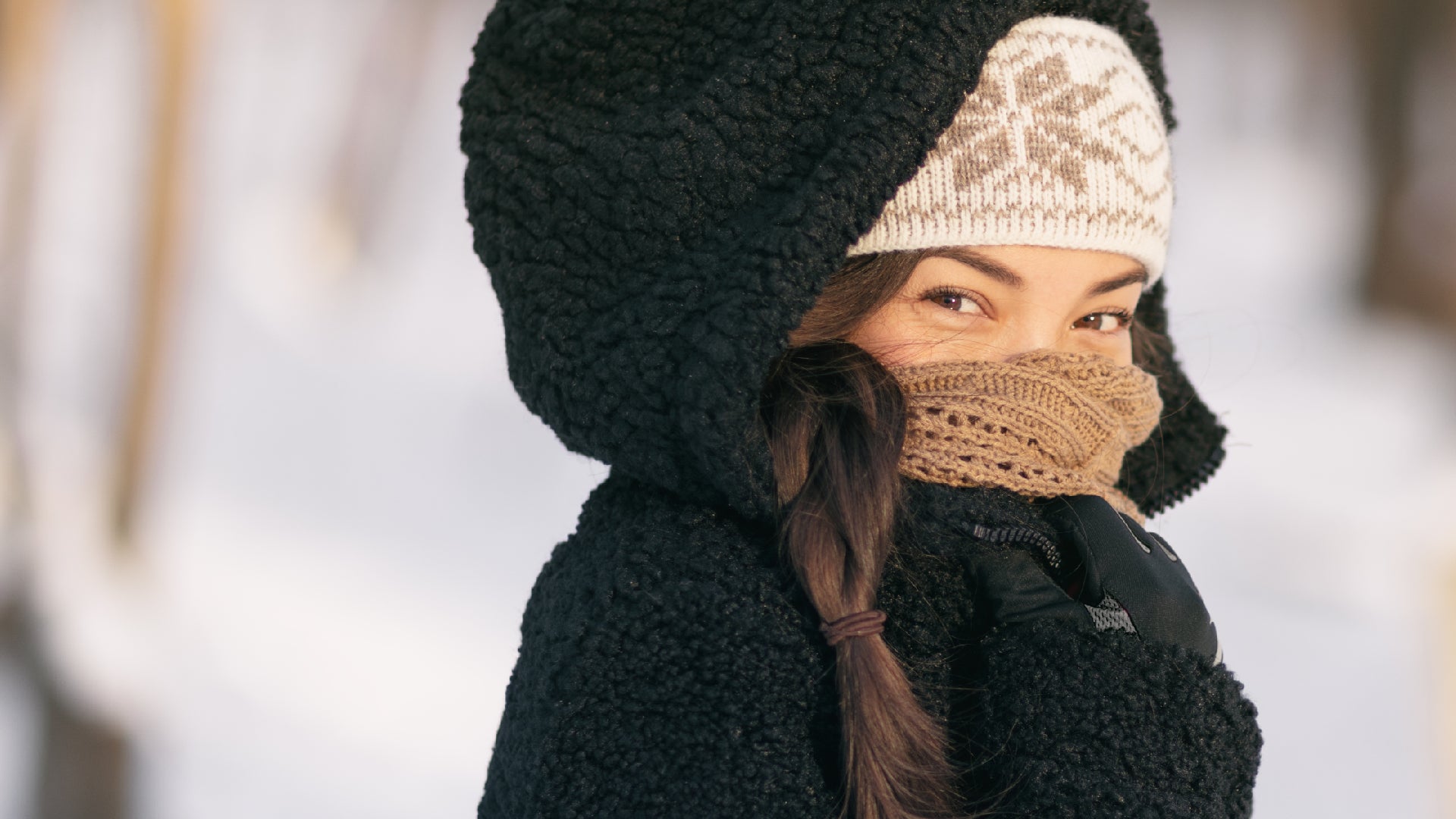
How To Avoid Winter Skin Flare-Ups
If winter makes your skin quiver with the thought of dry air, cold temps, hot baths and central heating, you’re going to need to know how to nurture your skin through the next few months. Good news: you’re in the right place for that.
Whether you suffer with eczema, psoriasis, or simply have super-dry skin that goes into panic mode as soon as December comes around, winter can be tough on your complexion. From itchy cheeks and sensitivities through to cracked lips and an irritated neck (thanks knitted scarf!) winter skin struggles can be very real.
So, why is winter so tough on your skin? Well, it’s all about the cold, dry air which literally saps all the moisture from the top, protective layers of your skin, leaving it open to dryness, dehydration and irritation. Cold air outside also means you’re more likely to experience warmer air inside due to cranked up heating, log burners and open fires. And warmth does not equal moisture. In fact, these extreme changes in temperature do nothing but dry out your skin even more. Then, you go and throw hot baths into the equation. Frankly, your skin stands no chance.
Don’t fancy battling your way through the next four months with unhappy skin? We don’t blame you. So, here are the best ways to find a little skin comfort this winter season.
Take Shorter, Cooler Showers & Baths
It’s hard to resist the temptation of a long soak in a hot bath – especially if you’ve been skiing or out in the grueling cold all day. However, this quick change in temperature is super irritating for your skin, stripping away important lipids, depleting moisture from your skin’s barrier function, and leaving you dehydrated and open to irritation. It can even cause inflammation and really nasty flare-ups. The same goes for hot tubs (noooooo!), scorching showers and even using steamy water to wash your hands. Basically, hot water is the enemy for dry skin. Not. Worth. It.
Our advice? Wait 10-15 minutes after coming in from the cold before dunking any part of your body in hot water. Then, when you do, turn down the heat so the water is a more neutral, comfortable temperature. When it comes to showers and baths, stick to five minutes in the shower and 10 in the bath to save your skin from become dry and itchy.
Finally, remember that your ideal home temperature should be no more than 70 degrees Fahrenheit.
Moisturize Straight After Cleansing
No matter how careful and gentle your cleansing routine is, exposing your skin to water and cleansing ingredients is always going to leave your skin susceptible to dryness.
Unless you moisturize all over like an absolute demon, of course.
A good moisturizer helps seal water into your skin and stops further moisture from escaping from the surface. This is why it’s such an important part of any good skincare routine. According to the National Eczema Association it’s vital to apply moisturizer within three minutes of bathing, showering, cleansing your face or washing your hands. We have tons of awesome moisturizers to choose from but our winter picks have to be Renewing Longevity Moisturizing Cream in the daytime, followed by Vitamin C Deep Hydration Night Cream before bed. To up the ante even further, apply a hydrating, soothing serum first. We love Niacinamide Facial Serum which is one of the best.
Know That Layers Are Your Besties
Exposing your skin to extreme temperatures is the biggest no-no for dry, sensitive skin – especially if you suffer with eczema. So try not to do that. This sounds easier said than done, we know, but there is one simple way to keep your skin warm when you’re outside and simultaneously avoid it overheating when you’re inside. Layers.
Wearing lots of layers allows you to respond to abrupt changes in temperatures really easily. Just make sure you choose cotton, natural fabrics that are easy to take off while you’re inside. And when outside, bundle up with scarves, gloves and hats which are all great for protecting your hands and as much of your face as possible, helping you to retain a warm, even temperature all day... and night.
Embrace Occlusive Skincare Ingredients
Sticking with the same moisturizer all year long might work for some people, but lightweight summer lotions often don’t pack the right punch when arctic weather sets in.
If this sounds familiar, step it up with a heavier cream rather than a gel or lotion, and check your labels for rich occlusive ingredients like shea butter, coconut oil, jojoba oil and squalane. These are awesome for helping to create a barrier on the surface of your skin, protecting it from bracing winds and environmental nasties while locking in moisture.
Our classic Vitamin C Brightening Moisturizer is always a winner because it contains tons of heavy-hitting moisturizing ingredients which are ideal for dull, parched, winter skin.
Take Stock Of Your Household Cleaning Products
Any product that comes into contact with your skin needs careful scrutiny – not just those in your skincare routine. Granted, this is a valid point all year round, but it’s even more important if a) you have dry, sensitive skin and b) you suffer x20 during the winter months.
Hand sanitizers, dish soap, powerful cleaners and laundry detergents, for example, often contain harsh chemicals like alcohols, preservatives and synthetic fragrances which can be super irritating on delicate skin, causing redness, itching, swelling and severe dryness. Of course, who’s to know which specific ingredients are causing you issues unless you have your skin professionally analyzed and tested? But even without that you can be more mindful by looking into natural, fragrance-free options whenever possible. Fabric softeners and dryer sheets are huge offenders, too, so our advice is simply to avoid those as much as possible.
You could also protect your hands by wearing latex-free gloves when doing the dishes or cleansing with a gentle hand wash after exposing your hands to any cleaning product. And, of course, always follow with moisturizer.
Basically, when it doubt, reach for the moisturizer! It will never fail you.








